How is the "Cable bone transport technique" used to treat bone defects?
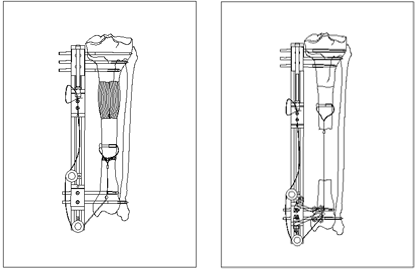
In long bone nonunions (pseudoarthrosis), bone defects can sometimes occur in the treatment of bone infections or bone tumors. This defect we speak about occurs in areas with bone gaps and can be treated using various methods. In the classical methods, the transport bone fragment technique involves using an external fixator, with pins and K-wire, which pass through the skin and muscles. During the procedure, the pins and K-wire travel along the skin. This can lead to serious soft tissue complications, scar tissue and scars on the skin, depending on the wire and the cables used. Because of these issues, complications can arise in patients with large bone defects. The "CBT" technique was developed and written about by Prof. Dr. Metin Kucukkaya and has been used by many physicians in the world (The New Intramedullary Cable Bone Transport Technique, Metin Kucukkaya, et al., J Orthop Trauma 2009). In the "CBT" technique, the transported bone fragment is moved by a special steel wire inside the bone and used to fill the gap. The "CBT" technique does not create a problem for the soft tissue or leave scars on the scan, bone healing occurs faster, it can be used to treat very significant bone defects (18-20 cm), and is a much more comfortable option for the patient.
"CBT technique"
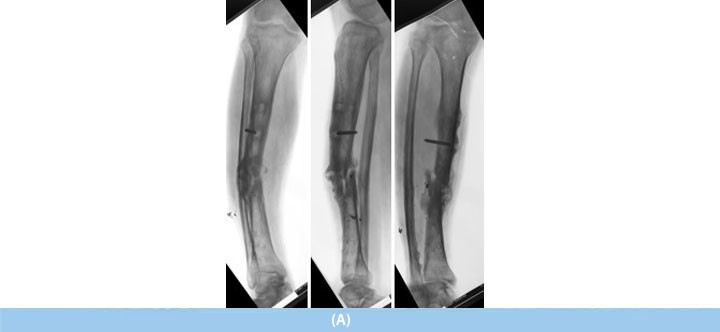
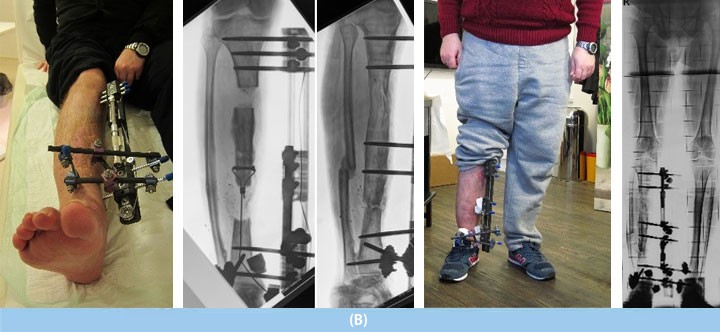
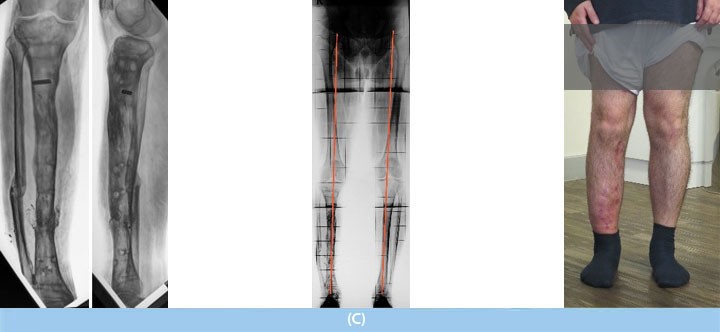
“Cable bone transport technique”
A) The patient underwent 3 operations following a gunshot injury from 3 years before (age 37). When he arrived, he could not step down on the right leg and was experiencing pain; a pathological movement pattern was detected through manual examination. He had also been unable to work for 2 years.
B) The nonunion site was cleaned. Using the “Cable bone transport technique”, the bone was repositioned during surgery. (The New Intramedullary Cable Bone Transport Technique, Metin Kucukkaya, et al., J Orthop Trauma 2009). This technique is particularly effective in the treatment of large bone defects. The necessary amount of bone lengthening was applied to ensure that the discrepancy did not remain. During the treatment, the patient was walking on crutches with the external fixator in place and was also able to perform daily tasks.
C) After the treatment, the fracture healed completely and the patient returned to normal daily life and sports activities. A view of the mechanical axis in the graph shows completely normal alignment on the side that was operated on.
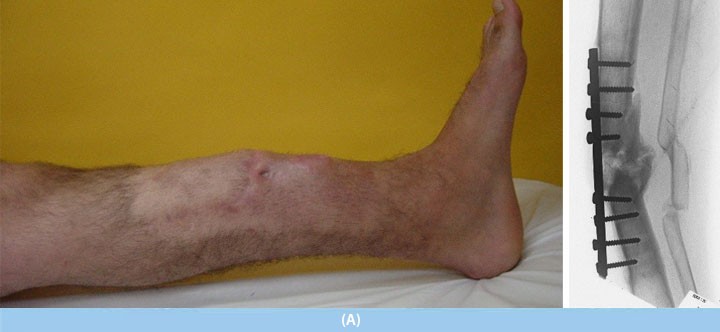
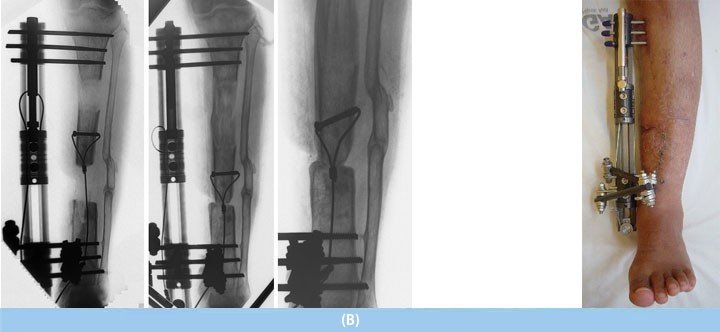
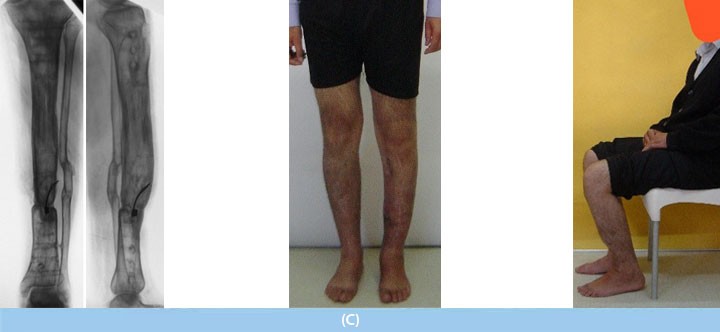
“Cable bone transport technique”
A) The tibia was broken 3 years before following an accident and a number of surgeries were performed (age 28). In the area of the fracture, infection and nonunion developed. When he arrived, he had a wound with discharge and bad odor and wasn't able to put weight on the leg. Also, he had been unable to work for 3 years.
B) The infected area was cleaned, the plate and screws were removed, and using the “Cable bone transport technique”, the bone was repositioned during surgery. (The New Intramedullary Cable Bone Transport Technique, Metin Kucukkaya, et al., J Orthop Trauma 2009). This technique is particularly effective in the treatment of large bone defects.
C) After the surgery, the fracture was completely healed and the patient returned to normal daily life.
Leg Length Discrepancy
and Limb Deformities
in Children
Leg Length Discrepancy
and Limb Deformities
in Adults?
Nonunions
and
Osteomyelitis
Achondroplasia
(Nanism)
Cosmetic
Leg Lengthening
How are length
discrepancies in the
toes and arms treated?
Length Extension
Techniques
- Lengthening Nails
- External Fixators
- Combined techniques
